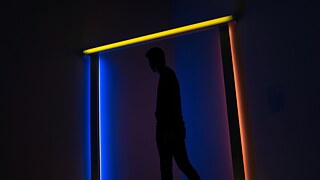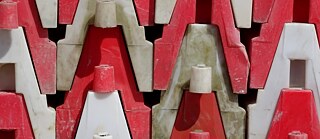The Coconut Effect
The QR Codes from Coffee Filters Lead Nowhere
To set the scene, my good friend Nils Bleibtreu was talking about the VLC player. Looking out the window of Dusseldorf Art Academy at the Tonhalle concert hall on the banks of the Rhine River, Nils explained that he wanted to paint the traffic cone, colloquially known as a little Lübeck hat (Lübecker Hütchen in German), used as a logo by the VLC player. It is an extremely suitable subject, remarked Nils, as it has both geometric abstraction and inner meaning.
Trap the Cap
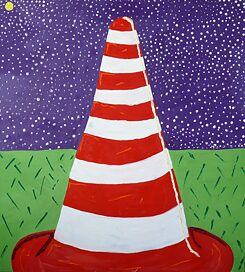 Memories of Heidelberg - Painting by Nils Bleibtreu
| © Nils Bleibtreu
My desktop features a compass, an envelope, and an eighties telephone symbol. The VLC player’s logo stands alone, however; it refers back to nothing in particular, which I believe is the only reason it resonated with Nils at the time. It does not “sample” any anachronistic technology – and can therefore be sampled itself. It is not something from the past that programs the interface of reality, in a linear and supposedly logical way; instead, it is influenced by randomness – mutation and Mannerism. If the VLC player hadn’t existed, we would never have gotten so enthusiastic about traffic cones – an obsession that soon led to us collecting all kinds of different safety equipment. One time, we were carrying some particularly old-fashioned safety barriers along Bolkerstrasse when we came across a bunch of drunks who turned out to be police union members enjoying a day out. Pursued by baton-swinging pigs, Nils and I fled into Neander Church, concealed the fencing in the sacristy, and played Trap the Cap with the friendly pastor until the coast was clear. Over the next few weeks, we got to know some members of the FUSS e.V., car-hating radicals who would meet conspiratorially in the basement of the Ratinger Hof bar where they would fight for pedestrian rights and safe sidewalks. The rapid appearance of safety barriers around the city was the result of their work.
Memories of Heidelberg - Painting by Nils Bleibtreu
| © Nils Bleibtreu
My desktop features a compass, an envelope, and an eighties telephone symbol. The VLC player’s logo stands alone, however; it refers back to nothing in particular, which I believe is the only reason it resonated with Nils at the time. It does not “sample” any anachronistic technology – and can therefore be sampled itself. It is not something from the past that programs the interface of reality, in a linear and supposedly logical way; instead, it is influenced by randomness – mutation and Mannerism. If the VLC player hadn’t existed, we would never have gotten so enthusiastic about traffic cones – an obsession that soon led to us collecting all kinds of different safety equipment. One time, we were carrying some particularly old-fashioned safety barriers along Bolkerstrasse when we came across a bunch of drunks who turned out to be police union members enjoying a day out. Pursued by baton-swinging pigs, Nils and I fled into Neander Church, concealed the fencing in the sacristy, and played Trap the Cap with the friendly pastor until the coast was clear. Over the next few weeks, we got to know some members of the FUSS e.V., car-hating radicals who would meet conspiratorially in the basement of the Ratinger Hof bar where they would fight for pedestrian rights and safe sidewalks. The rapid appearance of safety barriers around the city was the result of their work.
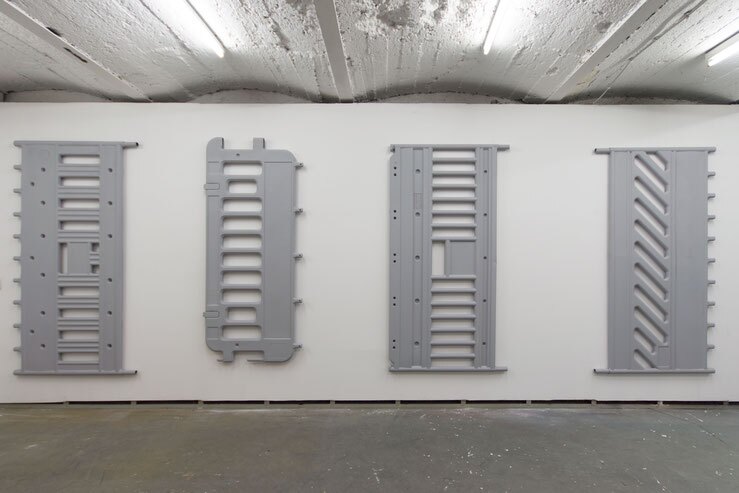 Nils Bleibtreu - Different kinds of pedestrian safety barriers in the Atelier
| © Nils Bleibtreu
Nils Bleibtreu - Different kinds of pedestrian safety barriers in the Atelier
| © Nils Bleibtreu
A horse in the wilderness is as silent as a laser beam in space
The coconut effect – named for the coconut shells that are tapped together in film studios to recreate the noise made by galloping horses, despite this not being a realistic impression of the sound that horses make on sand, meadows, or the grassy plains of the Midwest – describes the excessive influence that fiction has on our perception of reality. A horse in the wilderness is as silent as a laser beam in space. However, we – the viewers – would be confused if Han Solo’s blaster or Kevin Costner’s mule were to make no sound whatsoever, as habit and truth are two intersecting highways without traffic lights. Developers of electric cars face a similar problem: their engines, which are completely silent, make the cars seem so completely contrived that their reality has to be constructed, with the consequence that electric sounds are created within the framework of EU regulations. It is only thanks to these sounds that the cars begin to take on a physical manifestation. This can be nice: composing something new for processes that did not previously exist, as Brian Eno did with the fanfare sound used to signal that Windows 95 was powering up. After all, simulation does not necessarily mean that something artificial cannot also become natural or that sentimentality towers above everything that it once referred to, as Mount Whitney towers above Mulhacén. The United Nations Economic Commission for Europe recommends phasing out the gasoline engine, yet German industry seems to require a bit more time; Volkswagen – just as an example – is not afraid to invoke the Early Devonian period one last time: “We based the e-Up!2 and e-Golf3 on the internal combustion engine.”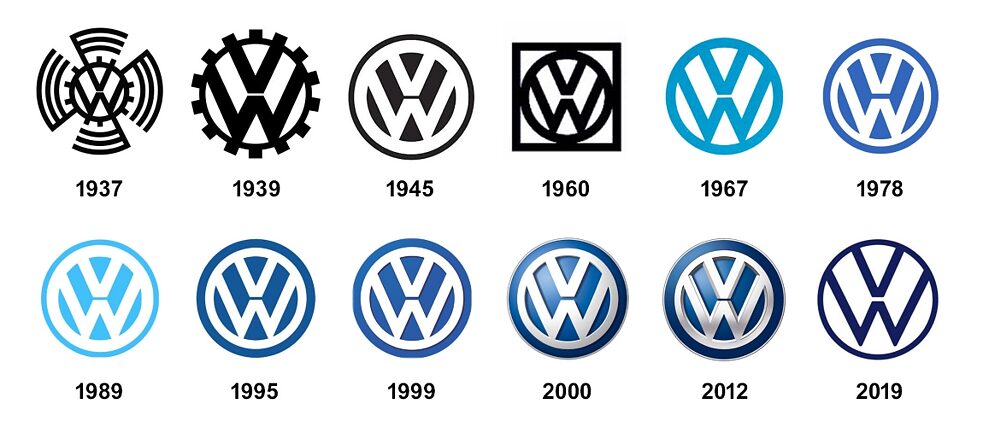 Volkswagen Logo History
| Wikimedia Commons CC BY-SA 4.0
Volkswagen Logo History
| Wikimedia Commons CC BY-SA 4.0
As much as I try, I cannot see any swastika
It’s almost heart-breaking to see how the car-makers in Wolfsburg are trying to divert attention from the latest crime in the company’s history by using a redesigned logo to invoke its biggest crime: 2020, overtime. The half-life of a trend is based here on the number of former forced laborers from the Laagberg concentration camp who are still alive today. A president gives a speech at the foot of Mount Rushmore. That was today, in July 2020. Five hundred years ago, Renaissance artists believed that all the works of antiquity upon which they based their own works were monochrome. They were referencing something that had never actually existed. Anyone who wants to see diesel enjoy a renaissance and thus decides to falsify its emissions is pinning their hopes on the concept of “clean diesel” working as an ideal. A misconception has to be implanted into people’s heads so that the deception isn’t revealed. How often do I have to read the beginning of the scene in order to believe that I was already interested in Atlantis back then? And how many glasses of beer do I need to drink to forget that, for me, the coconut effect serves primarily as a weapon against the present?There has been much talk recently about Ursula K. Le Guin’s The Carrier Bag Theory of Fiction, about the fact that there was a container in which something could be collected and transported before there were tools to transport. The forks, knives, and folding shovels needed to access the things to be collected – were added bit by bit. Le Guin writes: “We’ve heard it, we’ve all heard all about all the sticks and spears and swords, the things to bash and poke and hit with, the long, hard things, but we have not heard about the thing to put things in, the container for the thing contained. That is a new story. That is news.” That is also an option: to talk about something new while the coconuts go clippity-clop, to open up a container for all the things that do not even exist yet; in the same way that I open up this text to close neatly around the traffic cone, and the German Wikipedia entry for the VLC player: “One day, students from a network club at the École Centrale Paris came home drunk, carrying a traffic cone with them. Later, it was this club that created the VideoLAN project. When searching for a logo for the program, the traffic cone was chosen, which by this time had already grown into a sizeable collection of cones.”
This article was commissioned and created in collaboration with Das Wetter – Magazin für Text und Musik.
